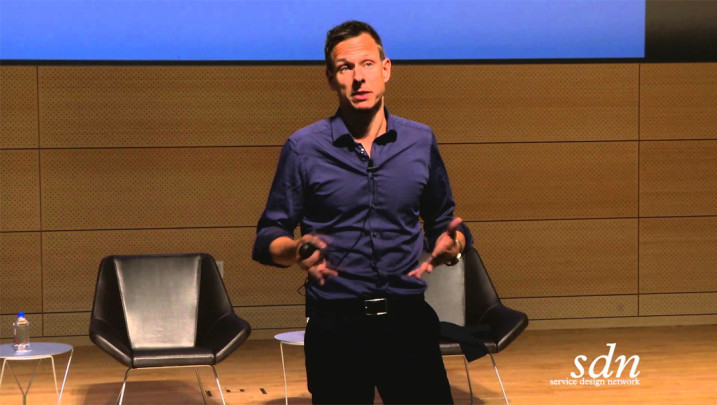1.Tell us more about perceived value of design in Denmark, and how the DDC works to influence it.
Denmark is in many ways a design society. When I grew up, I went to school in modernistic, functional and light buildings, I sat on well-crafted designer chairs, and I learned to be an active, reflective participant in our democracy. In my daily working life, I have been surrounded by well-designed architecture, furniture, lighting and other artefacts of a higher quality and standard than you would find in most countries. Danish design is part of our society’s DNA, and is in that sense invisible. You could say however that our strong design heritage is both a blessing and a curse. Leading the Danish Design Centre, as well as our mother foundation which we have actually named Design Society, poses the challenge of how to raise design awareness in a country entirely infused with great design?
The main issue for us is to help decision-makers in business and government understand how to tap into the underlying principles, practices and professional mindset of designers. To do so, we have chosen an approach that essentially involves bridging designers (suppliers of design methods) with business (potentially users of design methods) through processes of systematic experimentation. Or, in design terminology, we leverage design methods of inquiry, ideations and prototyping to explore how design can create value in such complex settings as business organizations.
2.When Scandinavian design is mentioned, one initially thinks of the widely developed ‘formal’ fields of design, such as industrial and visual design. Would you say that there is a shift in the way that design is being perceived, from a more aesthetic to a more strategic position in Denmark?
The awareness of design in other domains, as a strategic resource for company- wide innovation, and as an approach to innovation in the public sector, has been on the rise in Denmark for more than a decade. Intertwined with this is the rise of design as a more collaborative discipline, focusing on co-design and service design. For instance, the first government programme on service design for public organisations was launched in the mid-2000s.
In a sense, this heralds a return to our roots, since Denmark and the other Scandinavian countries pioneered the participatory design movement already in the early 1970s. It is interesting how we have been a bit late to latch on to the global movement around collaborative approaches to design when we were really first movers back then.
3. Tell us more about the DDC’s role in helping to shape this new understanding of what design is.
At the DDC we believe that our role first and foremost is to help businesses create more value. To do so, we spend a small amount of public funding to catalyse new forms of collaborations between designers and businesses – collaborations, which would otherwise not have taken place.
This means that we first consider every meeting between designers and business organisations as an experiment – an experiment which we seek to establish, for instance through funding and matching programmes. We then deploy anthropologists and other design researchers to observe and gather insights from the unfolding processes of innovation and change. Finally we work hard to create real-time ways of sharing the processes so we can share them with everyone else who might benefit from the learnings that take place. We call this a model based on experimentation, learning and sharing. And we do this on three different scales: prototypes, programmes, and larger-scale products, which businesses can access to benefit from the codified knowledge, tools and cases we create.
Finally it is important to mention that we have chosen five strategic areas to work on for the coming years: Design for new business models, design for advanced manufacturing, design for healthcare, design for cities, and design dimensions, where we examine the future of design practice.
The interested reader might check out our new strategy and platforms here: http://ddc.dk/en/about-ddc/strategy/
4. When we talk about methods, tools, and design processes in emerging design fields, many times they overlap but we tend to designate different names for them depending on what design field we’re actively engaged in. Practices such as CX, human-centered thinking and service design are all guilty of that. Which terminology do you prefer and do you think it’s important to use these denominations deliberately?
Especially since I started my own PhD project (which explores the role of design for transformational leadership in government), I have been acutely aware of the many different names and definitions being thrown around the field these days. Personally, I prefer the all-encompassing label “design”. However, to be more precise I do sometimes speak about “collaborative design approaches”, “service design”, “co-design” or “strategic use of design”. I try to avoid the term “design thinking”, as much confusion seems to surround the term, and since it draws our attention away from the power of design to be concrete and practical. However, with the widespread use of the term, sometimes it is the pragmatic choice to use it, when it fits the context. However, if we want to address the leadership issues involved in design, I think we need to be more precise. Instead – and this is in my new book “Shape the Future”, which is publishing in Danish on June 10th, and in English in January 2017, I have found that “design leadership” and “engagement with design” are useful terms, since they draw our attention to what happens between managers and designers. Without leadership, design has no or only limited impact in organisations; without design, leaders miss one of the most powerful generators of change we know of.
5.What do you as the representative of the DDC expect from the Service Design Network, and how do you think being a part of it will benefit the organization?
I see the Service Design Network as probably the broadest and most impactful global network when it comes to the emergent, collaborative forms of design. For us, it is a particular strength that SDN has such strong ties to business; too many design gatherings are essentially preaching to the choir, rather than inviting in those who stand to benefit the most from engaging with design.
Being part of the SDN will, I believe, help the DDC explore the frontiers of design practice, link us up with inspiring organizations and people, and not least enable us to bring the knowledge we encounter into play in the Danish context, to the benefit of Danish businesses, designers and policy makers.
Thank you for your time, Christian. The SDN looks forward to assisting the DDC in it's future design ventures!





Share your thoughts
0 RepliesPlease login to comment